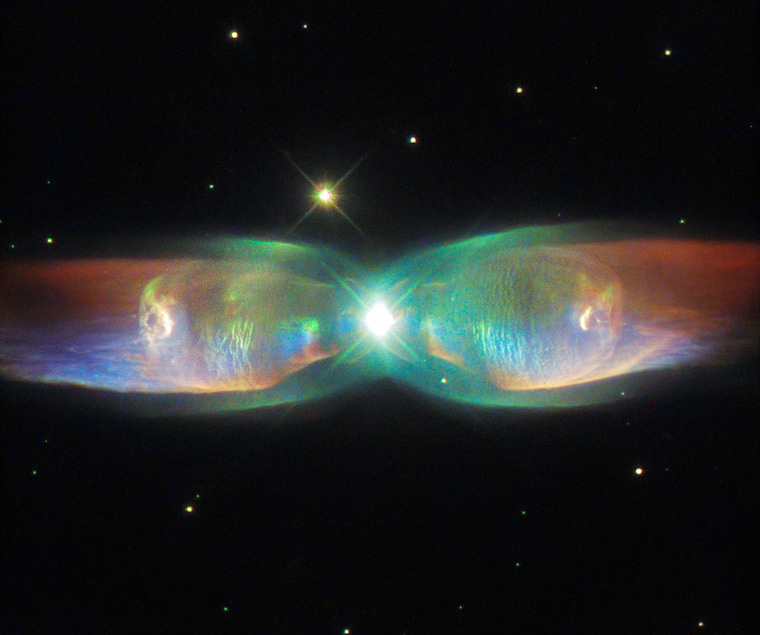Twin Jet Nebula

The Twin Jet Nebula, known by many other names like Minkowski 2-9, M2-9, Minkowski’s Butterfly, Butterfly Nebula, etc. is a bipolar planetary nebula with striking lobes. It’s composed of a binary pair of stars in a tight orbit, one theorised to be a compact white dwarf. The lobes are produced as one of the stars pulls off gas from the other and flings it into a think, dense disk extending into space.1 The outflowing stellar wind from the binary system also changes direction with a periodicity of 86 to 120 years, in line with the orbital period of the star.2
The fast stellar wind has contributed to a nebula which is increasing in size with time. Measurements of this rate has yielded the date of the initial death of the white dwarf progenitor, roughly ~1200 years.3
Footnotes
-
Lykou, F.; Chesneau, O.; Zijlstra, A. A.; Castro-Carrizo, A.; et al. (3 Feb 2011). “A disc inside the bipolar planetary nebula M2-9”. Astronomy & Astrophysics. EDP Sciences. link ↩︎
-
de la Fuente, Eduardo; Trinidad, Miguel A.; Tafoya, Daniel; Toledano-Juárez, Ivan; García-Flores, Samuel (2022). “The symbiotic and bipolar nebula M 2-9: Morphological variability of the collimated ionized wind arising from the core”. Publications of the Astronomical Society of Japan. link ↩︎
-
Schwarz, H. E.; Aspin, C.; Corradi, R. L. M.; Reipurth, B. (1997), “M 2-9: moving dust in a fast bipolar outflow”, Astronomy and Astrophysics link ↩︎